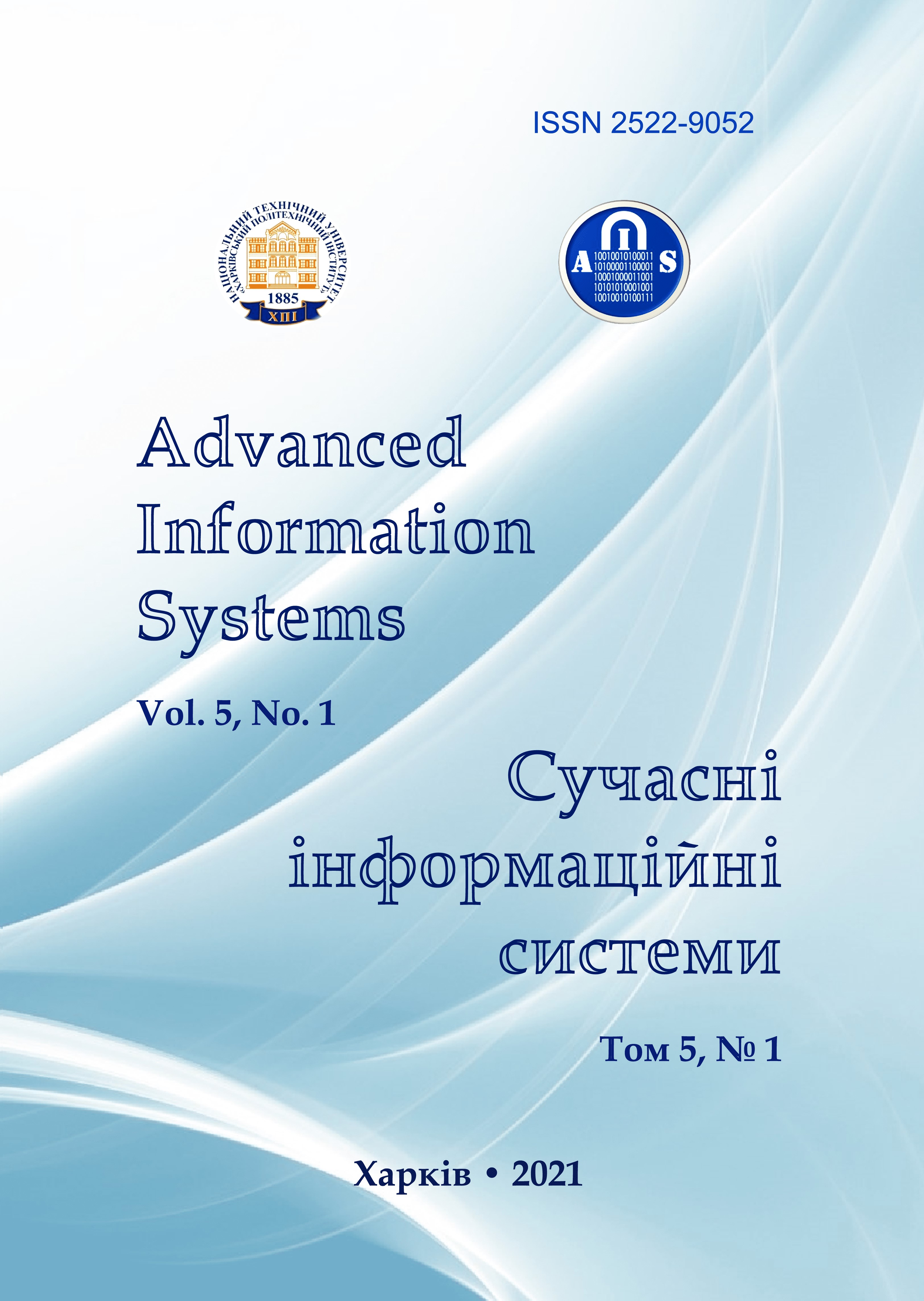THE DATA DIAGNOSTIC METHOD OF IN THE SYSTEM OF RESIDUE CLASSES
Main Article Content
Abstract
The subject of the article is the development of a method for diagnosing data that are presented in the system of residual classes (SRC). The purpose of the article is to develop a method for fast diagnostics of data in the SRC when entering the minimum information redundancy. Tasks: to analyze and identify possible shortcomings of existing methods for diagnosing data in the SRC, to explore possible ways to eliminate the identified shortcomings, to develop a method for prompt diagnosis of data in SRC. Research methods: methods of analysis and synthesis of computer systems, number theory, coding theory in SRC. The following results were obtained. It is shown that the main disadvantage of the existing methods is the significant time of data diagnostics when it is necessary to introduce significant information redundancy into the non-positional code structure (NCS). The method considered in the article makes it possible to increase the efficiency of the diagnostic procedure when introducing minimal information redundancy into the NCS. The data diagnostics time, in comparison with the known methods, is reduced primarily due to the elimination of the procedure for converting numbers from the NCS to the positional code, as well as the elimination of the positional operation of comparing numbers. Secondly, the data diagnostics time is reduced by reducing the number of SRC bases in which errors can occur. Third, the data diagnostics time is reduced due to the presentation of the set of values of the alternative set of numbers in a tabular form and the possibility of sampling them in one machine cycle. The amount of additionally introduced information redundancy is reduced due to the effective use of the internal information redundancy that exists in the SRC. An example of using the proposed method for diagnosing data in SRC is given. Conclusions. Thus, the proposed method makes it possible to reduce the time for diagnosing data errors that are presented in the SRC, which increases the efficiency of diagnostics with the introduction of minimal information redundancy.
Article Details
References
Krasnobayev, V.A., Kuznetsov, A.A., Koshman, S.A. and Kuznetsova, K.O. (2020), “A method for implementing the operation of modulo addition of the residues of two numbers in the residue number system”, Cybernetics and Systems Analysis, Vol. 56, No. 6, pp 1029-1038, DOI: https://doi.org/10.1007/s10559-020-00323-9.
Krasnobayev, V.A. and Koshman, S.A. (2018), “A method for operational diagnosis of data represented in a residue number system”, Cybernetics and Systems Analysis, Vol. 54, Issue 2, pp. 336-344, DOI: https://doi.org/10.1007/s10559-018-0035-y.
Krasnobayev, V.A., Yanko, A.S. and Koshman, S.A. (2016), “A Method for arithmetic comparison of data represented in a residue number of system”, Cybernetics and Systems Analysis, Vol. 52, Issue 1, pp. 145-150, DOI: https://doi.org/10.1007/s10559-016-9809-2.
Krasnobayev, V.A. and Koshman, S.A. (2019), “Method for implementing the arithmetic operation of addition in residue number system based on the use of the principle of circular shift”, Cybernetics and Systems Analysis, Vol. 55, Issue 4,
pp. 692-698, DOI: https://doi.org/10.1007/s10559-019-00179-8.
Krasnobayev, V.A., Koshman, S.A. and Mavrina, M.A. (2014), “A method for increasing the reliability of verification of data represented in a residue number system”, Cybernetics and Systems Analysis, Vol. 50, Issue 6, pp. 969-976, DOI: https://doi.org/10.1007/s10559-014-9688-3.
